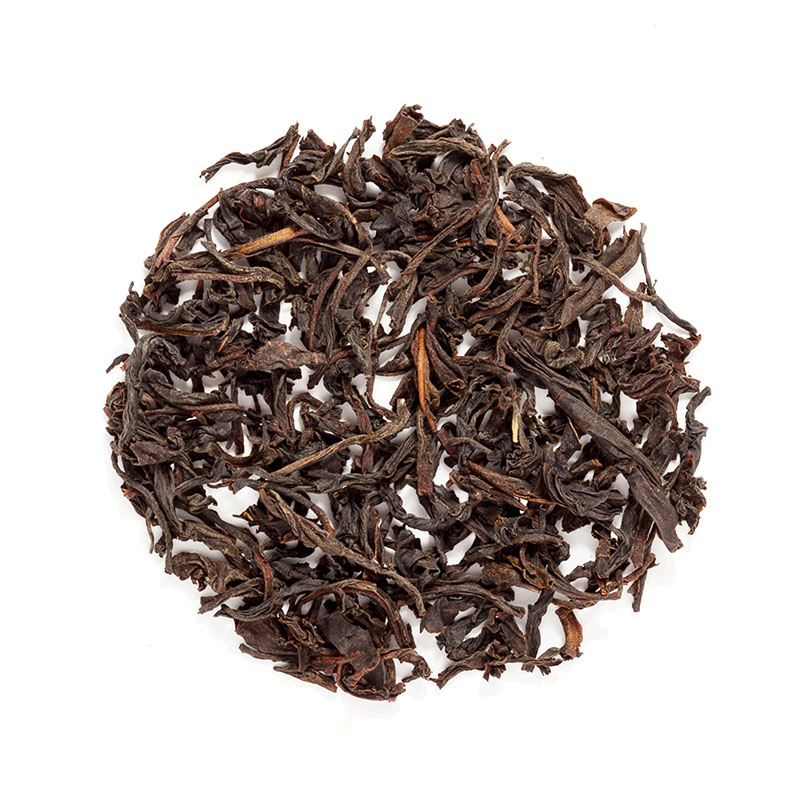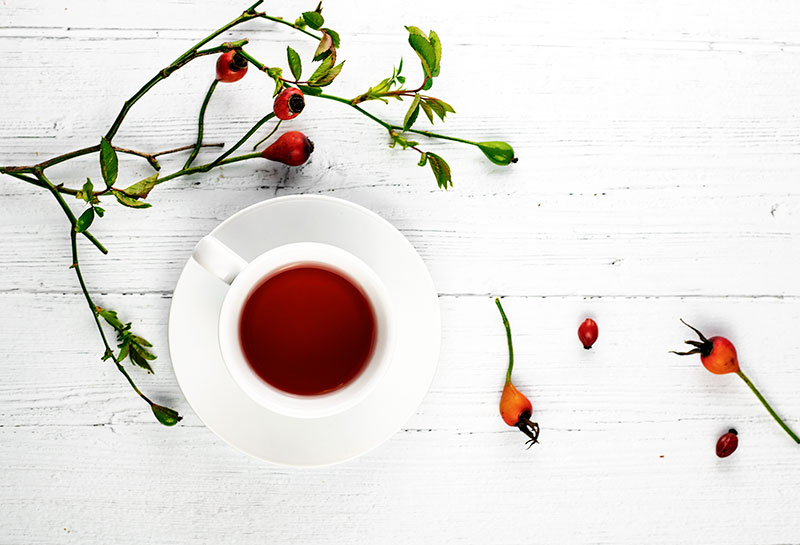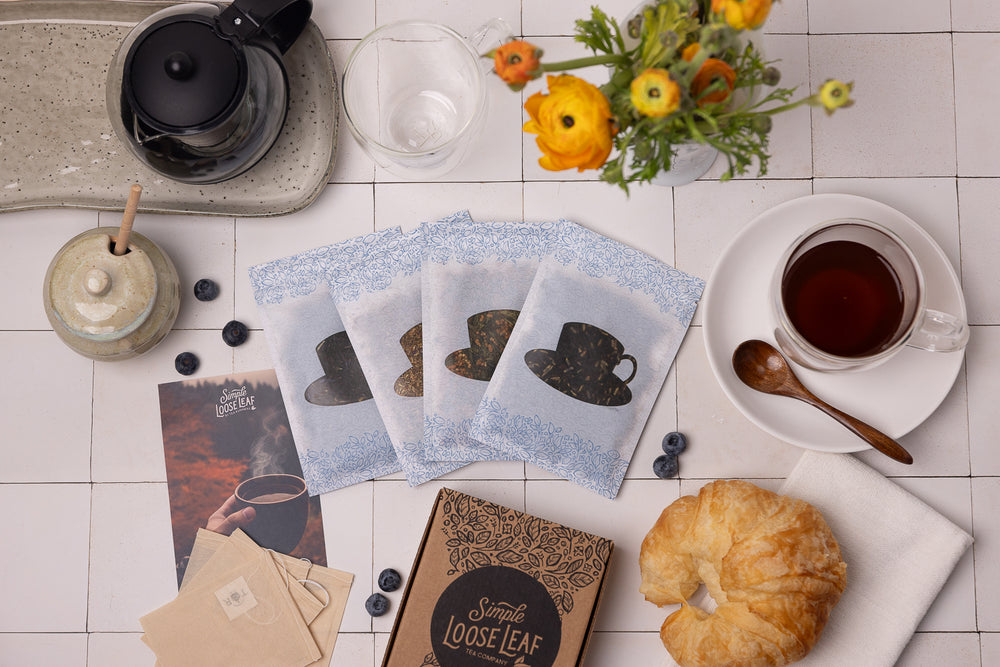Best Types of European Teas
This post may contain affiliate links. Simple Loose Leaf is a participant in the Amazon Associates Program, an affiliate advertising program designed to provide a means for sites to earn advertising fees by linking to Amazon.com. Tea is drunk and produced on every continent in the world except in the Antarctica. The story of tea started thousands of years ago in China. From there, it spread to other Asian countries, and finally to other continents. Today, tea in Europe is as important as any other drink. Throughout the centuries some countries have developed a strong tea tradition and started tea production too. Europe may not sound like a continent suitable for growing tea, but that’s far from the truth. When did tea arrive to Europe, which countries grow real tea and what are the most popular types?
History of tea in Europe
Tea was first brought to Europe in the 16th century, but the tea plant didn’t arrive until the 18th century[1]. The actual cultivation started much later. The Dutch were the first to bring green tea to Europe in 1610. Even back than tea was appreciated for its health benefits and known as a medicinal and therapeutic beverage[2]. Although the tea wasn’t grown locally, it had a strong importance in many countries. Tea became incredibly important in the 19th century, when the afternoon tea tradition was invented by Anna, the Duchess of Bedford. Drinking tea was first reserved for the higher social classes, but soon gained popularity and became more accessible across the UK. In other countries, too, tea was a privilege, rather than a commodity, until it became more accessible in the 19th century[3]. Most of it was black, while green tea gained popularity only recently, in the last couple of decades. Today, green tea is a tea of choice in Denmark, Belgium and France[4]. In other countries, herbal teas were an important part of traditional medicines. Chamomile, mint, linden flowers and other plants and flowers were often used as home remedies for different health problems.Which countries grow tea in Europe?
Today, tea is grown in many European countries. Some have a naturally good climate and soil for growing tea, while others are using special more robust tea cultivars that can survive in harsh climates. Gorreana, the oldest tea plantation in Europe is located on the tropical island of Sao Miguel, on the Portuguese Azores, alongside a smaller Cha Porto Formoso tea gardens. Gorreana was founded in 1883[5], and still produces high quality tea. In UK, all countries – Wales, England, North Ireland and Scotland are producing quality tea, for either commercial or non-commercial purposes. Tea can be found in Spain, Germany, Netherlands, Georgia and the European part of Russia too.What are the most popular types of tea in Europe?
Real tea is the most popular in Western countries, especially in the United Kingdom, Ireland, the Netherlands and Poland[6]. In the rest of European countries the popularity of tea started growing rapidly too, especially in Spain, Germany and France. Hot tea is still more popular than iced or sweet teas, with black, green, herbal and fruity blends being a favorite choice.1. English breakfast
This strong and malty blend of different black teas is one of the most popular teas in Europe. It’s almost always drank with milk and sugar, and not only in the mornings. This blend was created in the late 19th century by a Scottish tea merchant that needed a strong tea to accompany a hearty breakfast[7].2. Earl Grey
Earl Grey is a delicious blend of black tea and bergamot orange essential oil invented about 200 years ago in England. Today, it’s still one of the most popular blends. Earl Grey taste great both pure and with milk, and can be blended with other ingredients too.3. Darjeeling tea
A champagne of all teas, Darjeeling, is the third most popular black tea in Europe. Darjeeling in India started growing tea only 200 years ago from tea seeds brought from China[8]. Today, this tea is available from many European stores, in tea bags and loose leaf form.4. Orange Pekoe
Orange Pekoe is a tea that’s not actually a specific type. The word orange pekoe represents a grade of tea leaves, rather than a tea type. However, in Europe it mostly means tea from Sri Lanka. It’s lighter than regular Assam black tea.
Ceylon Orange Pekoe black tea
5. Sencha
Although green tea is still less popular than black tea, it’s far from being a novelty drink. Sencha is one of the most popular and widely available green tea in Europe. It’s usually drank pure, prepared hot, or as a base for other flavored teas. Other popular types are Gunpowder, Dragon Well and Jasmine green tea.Popular herbal teas
Today, every European country has their own preferred herbal teas. From ginger and turmeric, to lemons and sage, thyme, rosemary, elderflower or lavender, herbal infusions are extremely popular in Europe. It’s not uncommon to make herbal tea from fresh herbs, or to make your own blend with hand-harvested and dried plants.-
Chamomile
-
Rose hips

Rose hips herbal tea
-
Linden flower
-
Mint
-
Ginger
Disclaimer: This article is for informational purposes only. It’s not intended to replace medical advice, diagnosis or treatment. Every person is different and may react to different herbs and teas differently. Never use teas or herbs to treat serious medical conditions on your own. Always seek professional medical advice before choosing home remedies.
References:
[1] https://ec.europa.eu/eip/agriculture/en/find-connect/project-ideas/tea-camellia-sinensis-cultivation-europe [2] https://www.hotsoup.nl/en/hot-info/thee-chronologisch.html [3] https://www.dw.com/en/a-little-history-of-what-germans-drink-and-why/a-16880477 [4] https://www.cbi.eu/market-information/tea/trade-statistics [5] https://gorreana.pt/en/ [6] https://www.cbi.eu/market-information/tea/trade-statistics [7] https://www.diffordsguide.com/encyclopedia/1155/bws/english-breakfast-tea [8] https://www.darjeeling-tourism.com/darj_0000bc.htm
More from:
SLL





Leave a comment